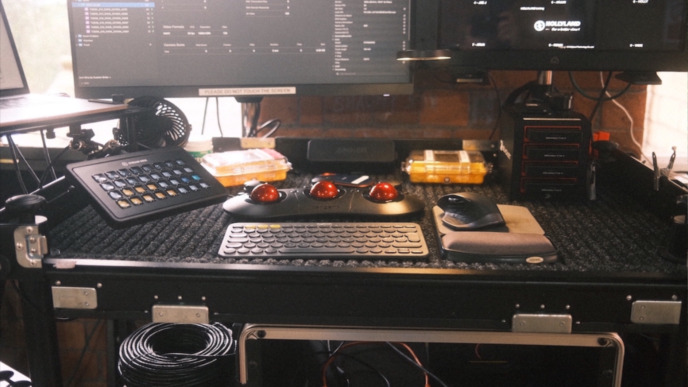
Good backup software for filmmakers should, of course, simplify the backup procedure (e.g., by creating multiple copies in one run), but it should also let you be fully confident that your copies are complete and verified.
In the following article, we will outline some of the criteria that a good backup software should meet and describe how we’ve integrated them into our on-set data management application Silverstack.
1. Create Hashes
File hashes (also referred to as checksums) are unique strings or numbers computed from files with a certain hashing algorithm. The hashes are unique for every file and change entirely when something in the file changes – even the smallest alteration. Therefore, file hashes are perfectly suited to make sure a file is identical after it has been copied. You can find a detailed article on the basic concept of hashes and checksums here!
Creating hashes of the files during the copy process, and verifying them afterward, sets the basis for a secure copy process. Silverstack creates and stores hashes in order to check if files are identical in every copy location. This check happens during the copy process.
2. Perform a Separate Verification by Reading All Destinations
The only way to make sure that a file is identical on a copy destination is to read it on the destination, create its hash, and compare it to the hash of the original file.
Silverstack takes care of this process in one- and even multi-destination scenarios and actively provides feedback about the results. This way, the software ensures no data is lost at any time.
Silverstack uses the same verification mechanism to detect another potential problem with a process called “Source Verification”. By hashing the copy source once more (while the destinations are verified), reliability problems with the physical camera media can be detected early, and cards can be sorted out before the problem gets bigger.
3. Provide a Simple Status Overview of Verification Completeness
One key aspect in running offload jobs is to always know about the verification status of the offloaded files. In case everything is fine with the copy and the verification is complete, the user should be able to see this positive state. Likewise, users will be immediately notified about errors.
Silverstack attaches great importance to the transparent display of copy and verification processes and constantly provides the user with information about what’s currently going on. In a well-structured jobs view, it is always clear in which part of the copy and verification process a single file is or which progress its current job makes. Consolidating this complexity, a jobs summary, as well as the verification states, make sure a status overview is only one glimpse away.
If any more details are needed, the Silverstack library gives insights into a lot of relevant details like, for example, checksum strings or detailed clip metadata.
4. Handle Errors Transparently
Although unlikely, errors can still happen at any time. For example, a clip could be corrupted, read and write problems could occur on certain disks, and so on. In these cases, it is important to know exactly what’s going on in order to solve the situation quickly and return to your duties.
Silverstack communicates all errors transparently to the user by providing a comprehensive jobs summary with successful and failed jobs. In case of an error, the user can take action based on the information provided by Silverstack. In case Silverstack indicates a failed offload, check out this dedicated article on how to handle them!
5. Follow a Holistic Security Strategy
Professional backup software takes care of data safety on a lot of different levels. It implements processes and measures “under the hood” that you will not notice in daily practice. They all work together to ensure maximum security.
Silverstack, for example, involves the operating system’s (e.g., macOS’s) file system procedures in its copy process. So, for example, from application to disk there are several caches involved (mainly to speed up access), and Silverstack tries to make sure all caches are emptied when a file is marked as “finished”.
The software’s internal processes implement patterns that have proven their solid functionality for years. A holistic security strategy with many details under the hood – that are deliberately kept from the user – make Silverstack a convenient backup software for filmmakers.
6. Implement Constant Quality Assurance
As all things digital are changing quickly, good backup software needs to be kept up to date. It is not only necessary to verify new implementations in all detail but also to make sure that the existing functionality still works, for example, in context of the latest hardware.
Our product management team constantly reviews Silverstack to maintain its quality and identify further potential. Whether it concerns testing, code review, or anything in between, our team ensures that Silverstack keeps its proven security standard now and in the future.



